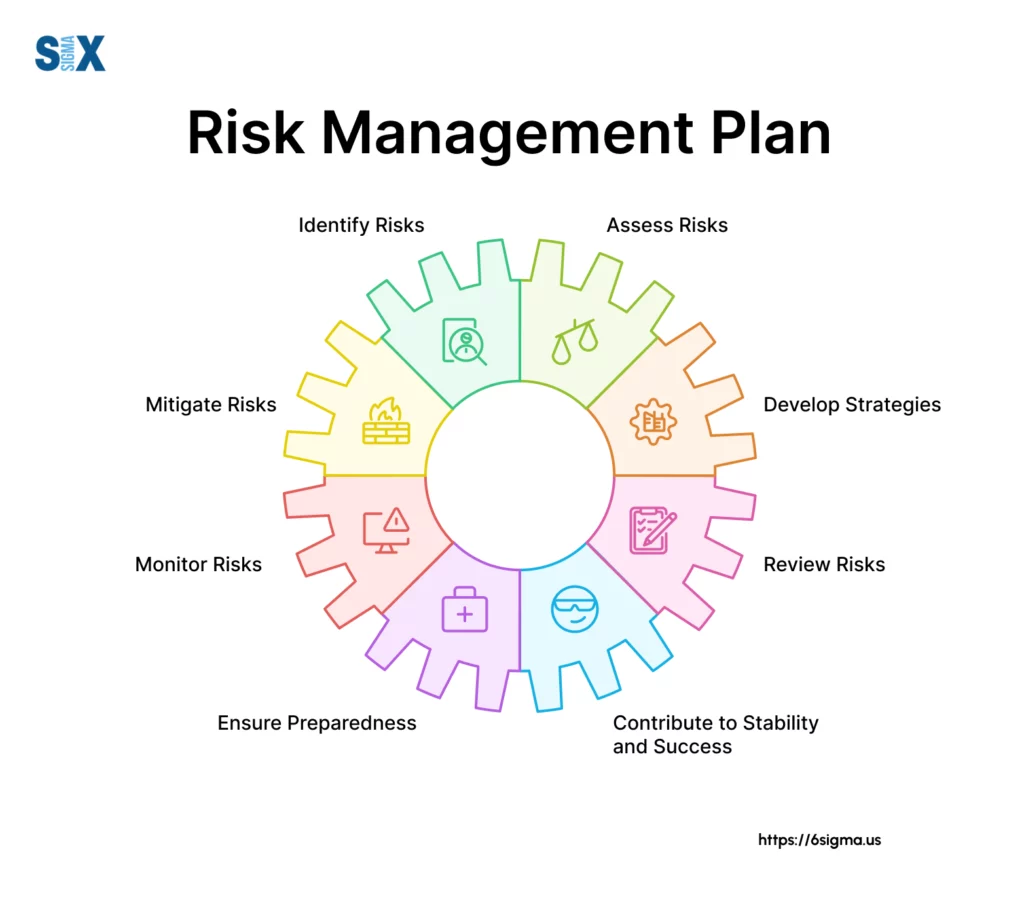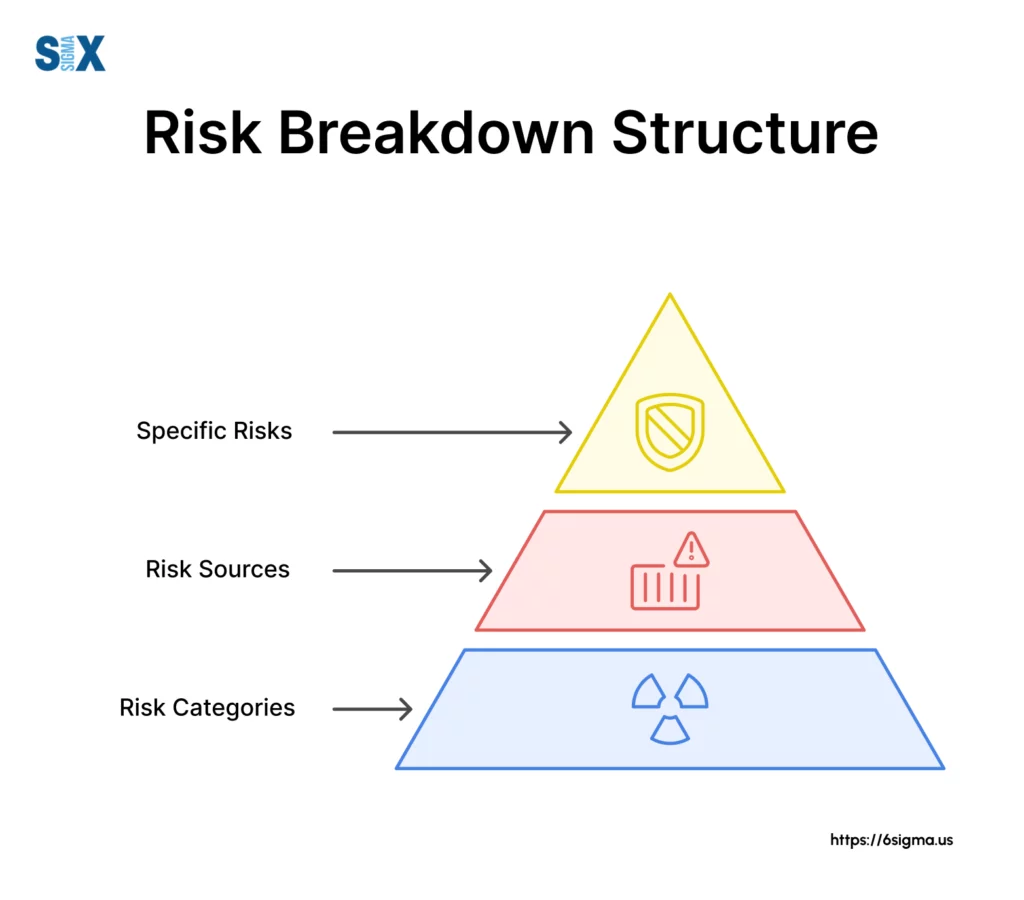The Importance of a Risk Management Plan in Business: A Comprehensive Guide
A risk management plan is a strategic document that outlines how an organization identifies, assesses, and responds to potential threats throughout a project’s lifecycle.
Risk management plan is not just a best practice—it’s a necessity.
Key Highlights
- Defining risk management plan components and importance
- Establishing a comprehensive risk management framework
- Techniques for qualitative and quantitative risk analysis
- Developing effective risk mitigation strategies
- Implementing and maintaining risk management processes
- Best practices for continuous improvement in risk management
Introduction to Risk Management Plans
A risk management plan is a comprehensive document that outlines the approach for identifying, assessing, and responding to potential risks throughout a project’s lifecycle.
Its primary purpose is to proactively address uncertainties that could impact project objectives, timelines, or resources.
We now how a meticulously crafted risk management plan can be the difference between project success and failure.

Importance in Project Management
In project management, a risk management plan serves as a critical tool for maintaining control and ensuring project success.
It provides a structured approach to dealing with unforeseen challenges, minimizing their impact on project outcomes.
With robust risk management plans consistently outperform those without, demonstrating higher success rates and better alignment with organizational goals.
Learn the basics of Risk Management Plan concepts with Lean Six Sigma Yellow Belt
Key Components of a Risk Management Plan
A comprehensive risk management plan comprises several crucial elements.
Let’s explore these components, which we have refined through years of practical application across diverse industries.
Risk Identification Process
The risk identification process is the foundation of any effective risk management plan.
It involves systematically recognizing and documenting potential threats to project success.
Collaborative brainstorming sessions, historical data analysis, and expert interviews are invaluable techniques for identifying risks comprehensively.
Risk Assessment Techniques
Once risks are identified, they must be assessed to determine their potential impact and likelihood.
Risk assessment techniques can range from simple qualitative methods to complex quantitative analyses.
Risk Response Planning
Risk response planning involves developing strategies to address identified risks.
This could include avoidance, mitigation, transfer, or acceptance of risks.
Risk Monitoring and Control
The final key component is risk monitoring and control.
This ongoing process involves tracking identified risks, implementing response plans, and continuously reassessing the risk.
Risk monitoring is crucial for maintaining project agility and responsiveness to changing conditions.
Learn in detail explanation of what is Risk Management Plan and what are its elements with Lean Six Sigma Green Belt
Developing a Comprehensive Risk Management Framework
Creating a robust risk management framework is essential for consistent and effective risk management across projects.
This framework serves as the backbone of your risk management efforts, ensuring a standardized approach.
Establishing Risk Management Methodology
A well-defined risk management methodology provides a structured approach to handling risks.
Integrating risk management methodologies with existing project management processes.
This integration ensures that risk management becomes an inherent part of project execution rather than a separate, isolated activity.
Creating a Risk Breakdown Structure
A Risk Breakdown Structure (RBS) is a hierarchical representation of potential risk sources.
It provides a comprehensive view of potential risk areas, from technical risks to organizational and external factors.
Defining Risk Evaluation Criteria
Establishing clear risk evaluation criteria is crucial for consistent risk assessment. These criteria should align with organizational objectives and risk tolerance levels.
The importance of quantifiable criteria that allow for objective risk evaluation and prioritization.

Risk Analysis and Prioritization
Effective risk analysis and prioritization are critical for focusing resources on the most significant threats.
This process involves both qualitative and quantitative techniques to assess and rank risks accurately.
Qualitative Risk Assessment Methods
Qualitative risk assessment methods involve subjective evaluation of risks based on their probability and impact.
These methods, such as risk probability and impact matrices, are particularly useful for quick assessments and when numerical data is limited.
Quantitative Risk Analysis Techniques
Quantitative risk analysis techniques involve numerical evaluation of risks.
These methods provide more precise risk assessments, especially crucial in high-stakes projects.
Using a Risk Prioritization Matrix
A risk prioritization matrix combines the probability and impact of risks to determine their overall severity.
This visual tool is invaluable for stakeholder communication and decision-making.
We’ve found that a well-designed risk prioritization matrix can effectively bridge communication gaps and align diverse teams on risk management priorities.
Risk Mitigation Strategies and Response Planning
Once risks are identified and analyzed, the next crucial step is developing effective mitigation strategies and response plans.
This proactive approach is key to minimizing potential negative impacts on project objectives.
Types of Risk Responses
There are four primary types of risk responses: avoidance, transfer, mitigation, and acceptance.
The choice of response depends on the nature of the risk, its potential impact, and the organization’s risk tolerance.
For instance, in product development projects at 3M, we often employed a combination of mitigation and transfer strategies for technology-related risks.
Developing Contingency Plans
Contingency planning involves preparing alternative courses of action for high-impact risks.
These plans should be detailed yet agile, allowing for quick implementation when needed.
Documenting Risk Mitigation Strategies
Proper documentation of risk mitigation strategies is crucial for effective implementation and future reference.
This documentation serves as a valuable resource for project teams and stakeholders throughout the project lifecycle.
Implementing and Maintaining the Risk Management Plan
The effectiveness of a risk management plan lies in its implementation and continuous maintenance.
This phase requires careful coordination, utilization of appropriate tools, and establishment of robust reporting processes.
Assigning Risk Management Team Roles
Clear definition and assignment of risk management roles are essential for effective plan implementation.
We recommend designating specific team members as risk owners for each identified risk.
This approach ensures accountability and facilitates prompt action when risks materialize.
Utilizing Risk Management Software and Tools
Leveraging appropriate risk management software and tools can significantly enhance the efficiency and effectiveness of risk management processes.
These tools are particularly valuable for complex projects with numerous interdependencies.
Establishing Risk Management Reporting Processes
Regular and structured risk reporting is crucial for keeping stakeholders informed and enabling timely decision-making.
We advocate establishing clear reporting protocols that include key risk indicators, status updates on mitigation efforts, and emerging risks.
These reports should be tailored to different stakeholder groups, ensuring that everyone from project teams to executive leadership has the information they need.
Know how to implement and maintain Risk Management Plans with Root Cause Analysis
Conclusion
As we conclude this comprehensive guide to creating an effective risk management plan, let’s recap the key points and emphasize the importance of continuous improvement in risk management.
Throughout this article, we’ve explored the critical components of a risk management plan, from initial risk identification to ongoing monitoring and control.
We’ve discussed the importance of establishing a robust risk management framework, employing both qualitative and quantitative analysis techniques, and developing targeted mitigation strategies.
The implementation phase, including role assignment and the use of specialized tools, is crucial for bringing the plan to life.
Remember effective risk management is not just a best practice—it’s a competitive necessity.
As you embark on or refine your risk management journey, consider leveraging the expertise of experienced professionals or pursuing advanced training in risk management methodologies.
The path to mastering risk management is continuous, but the rewards in terms of project success and organizational growth are immeasurable.
SixSigma.us offers both Live Virtual classes as well as Online Self-Paced training. Most option includes access to the same great Master Black Belt instructors that teach our World Class in-person sessions. Sign-up today!
Virtual Classroom Training Programs Self-Paced Online Training Programs






